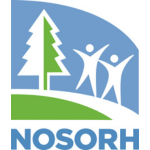By: Beth Blevins
Rural EMS organizations in Wisconsin are learning to work together and rally for their needs, as evidenced by the recent EMS Day at the Capitol.
The event grew out of an effort begun in 2015 by the Wisconsin Office of Rural Health (WI-ORH) to assess rural ambulance services in the state. That initial work also has generated targeted technical assistance, system-wide collaboration, and other types of advocacy.
Over 100 EMS providers from across Wisconsin gathered in Madison to visit with their legislators for EMS Day at the Capitol.
EMS Day at the Capitol, held on November 1, 2017, had 105 attendees, including representatives from 50 EMS agencies. “Several people said if we get 30 people we’ll be doing well because it’s a long drive and they would have to take the day off—but the registrations just kept rolling in,” said John Eich, WI-ORH Director. “For a first-time event, that was exciting.”
The group met with 97% of their senators and 70% of their representatives. “First and foremost, the purpose was to introduce themselves and start building a relationship, with the promise that ‘you’re going to hear from us more often’,” Eich said. The attendees were from four associations representing EMS providers: the (WSFCA), the (PAAW), the (PFFW), and the (WEMSA), as well as the State EMS Advisory Board.
“Fire and EMS don’t have any conflict in doing the work,” Eich continued. “But they sometimes have conflicting goals legislatively. And that can lead to bruised toes and a wariness to collaborate.”
In addition, Wisconsin has two separate EMS associations. “They had had a very acrimonious split many years ago, so part of our goal was to get them working together again,” Eich said. “The bait was the legislation coming up, which was something people were willing to set aside their differences for and show a united front. And they blew us away with how well they did that.”
The group had “three asks” before the legislature, Eich said. “First, the community paramedic bill before the Senate; second, a bill giving tax credits to volunteers; and third, a public safety exemption to state-mandated community levy limits.”
The EMS Day activity received television and other media coverage in the state. Perhaps more importantly, according to Eich, “The people who met with legislators came back with huge smiles on their faces—they were really enthused.”
Although the event was planned in only two months, its seeds were planted two years earlier, when WORH convened a national group of EMS leaders to help design an assessment of what makes a successful rural ambulance service. That work became a springboard for other EMS activities.
“That assessment put us on the map for all the state associations because, in order to do it, we had to email every EMS provider in the state—all 19,000 of them—from paramedics to first responders,” Eich said. “It made them aware of who we are, what we were doing, and helped establish trust in our intent.”
Then in the summer of 2016, Eich was asked to be part of a state legislative study group on rural EMS and firefighters. “That helped to rally EMS folks the following spring, because from that committee came some proposed legislation,” Eich said. “We reached out to those four associations and the EMS Board, and got together every quarter in our conference room. We started with developing a legislative plan, and out of that came the advocacy day for EMS.”
“For all of this, we served as the convener and host.” Eich said. “As with many of our counterparts in other states, we can’t advocate directly, but our university (where WI-ORH is housed) is comfortable with us facilitating a process for others to advocate on their own behalf.”
Funding for most of WI-ORH’s EMS work comes through Flex funding since that federal program was started as a merger of rural hospital and rural EMS federal grants. Their work on EMS Advocacy Day was funded through non-grant sources, such as their fee-for-service work.
The group is already planning to hold the next EMS Day at the Capitol, finding a time that fits the legislature’s biennial calendar.
——————————————————-
Wisconsin Office of Rural Health’s assessment tool, , is available online for free for any ambulance service or organization working with ambulance services in any state.
Does your SORH have a “Promising Practice”? We’re interested in the innovative, effective and valuable work that SORHs are doing. Contact Beth Blevins at to set up a short email or phone interview in which you can tell your story.
